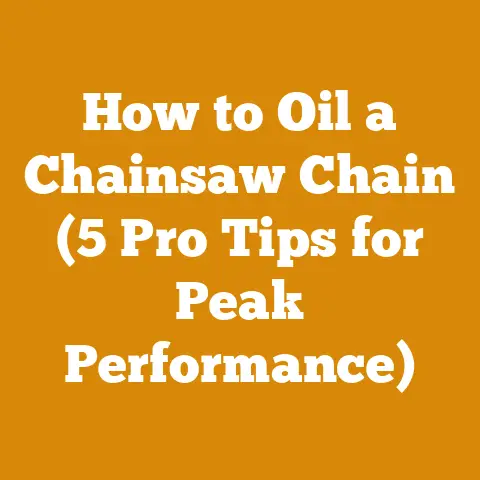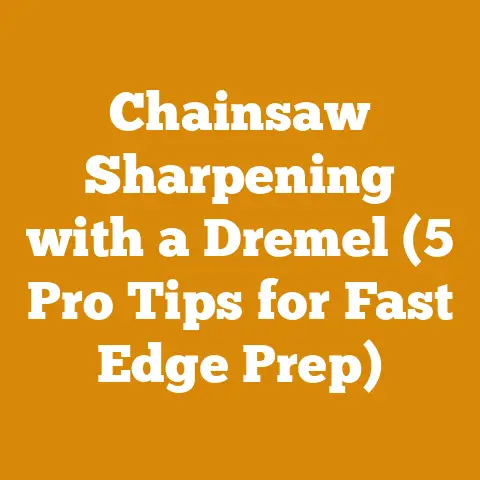Flooring Shear Tips (5 Pro Techniques for Perfect Wood Cuts)
Flooring Shear Tips (5 Pro Techniques for Perfect Wood Cuts)
The demand for hardwood flooring remains strong, driven by its durability, aesthetic appeal, and increasing property values. I’ve seen countless flooring projects marred by uneven edges and gaps, all because of improper cutting techniques. That’s why I’m sharing my top five pro techniques for using a flooring shear, ensuring your next wood flooring project results in a flawless finish.
Understanding the Flooring Shear: Your Key to Precision
A flooring shear is a specialized tool designed for cutting various types of flooring, including hardwood, laminate, and engineered wood. Unlike a saw, a flooring shear uses a long blade to shear through the material, resulting in a cleaner, quieter, and dust-free cut. It’s a game-changer for anyone tackling a flooring installation. I’ve personally found it indispensable for achieving professional results, especially in tight spaces or when working with delicate materials.
Why Choose a Flooring Shear Over a Saw?
Let’s compare the flooring shear to a more traditional tool, the saw. * Dust-Free Operation: Saws create a significant amount of dust, requiring ventilation and cleanup. Flooring shears produce virtually no dust. * Quiet Operation: Saws are noisy, disturbing neighbors and requiring hearing protection. Flooring shears are nearly silent. * Precise Cuts: Flooring shears deliver clean, accurate cuts without splintering or chipping. * Portability: Flooring shears are often lighter and more portable than saws, making them easier to move around the job site.
Different Types of Flooring Shears
Flooring shears come in various sizes and configurations, each suited for different materials and project scales.
- Manual Flooring Shears: These are operated by hand, requiring physical force to make the cut. They are ideal for smaller projects and DIY enthusiasts.
- Electric Flooring Shears: These shears use an electric motor to power the blade, making them easier to use for larger projects and thicker materials.
- Laminate Flooring Shears: Specifically designed for laminate flooring, these shears feature a blade that is optimized for cutting through the material’s dense core.
- Hardwood Flooring Shears: Built to handle the thickness and density of hardwood, these shears often have a longer blade and a more robust frame.
Pro Technique 1: Mastering the Measurement and Marking Process
Accurate measurements and precise markings are the foundation of any successful flooring installation. I’ve learned that rushing this step inevitably leads to errors and wasted material.
The Importance of Precise Measurement
Before you even think about picking up your flooring shear, take the time to measure your space accurately. Use a high-quality measuring tape and double-check your measurements to avoid costly mistakes. Remember the old adage: “Measure twice, cut once.”
- Measure the Room: Measure the length and width of the room, paying close attention to any irregularities or obstacles.
- Calculate the Area: Multiply the length and width to determine the total square footage of the room. Add an extra 5-10% for waste and cuts.
- Account for Obstacles: Measure around doorways, pipes, and other obstacles, and note these measurements on your plan.
Marking Your Cuts for Accuracy
Once you have your measurements, transfer them to your flooring planks using a sharp pencil and a T-square. Precision is key here.
- Use a T-Square: A T-square ensures that your lines are perfectly straight and perpendicular to the edge of the plank.
- Mark Clearly: Use a sharp pencil to create clear, visible lines.
- Double-Check Your Marks: Before you make any cuts, double-check your marks against your measurements to ensure accuracy.
Mitigating Common Measurement Errors
Even experienced professionals can make mistakes. Here are some common measurement errors to watch out for:
- Inconsistent Measuring Tape: Ensure your measuring tape is accurate and not stretched or damaged.
- Rounding Errors: Avoid rounding measurements until the final calculation.
- Ignoring Obstacles: Don’t forget to account for obstacles like doorways, pipes, and cabinets.
Actionable Tip: Create a detailed floor plan with all measurements and obstacle locations clearly marked. This will serve as your guide throughout the installation process.
Pro Technique 2: Optimizing Shear Blade Angle for Different Wood Types
The angle at which you position your flooring plank in the shear is crucial for achieving a clean, splinter-free cut. Different wood types require slightly different angles to optimize the shearing action. Through years of experience, I’ve developed a keen sense for adjusting the angle based on the wood’s density and grain direction.
Understanding Wood Grain and Density
Wood grain refers to the direction of the wood fibers. Cutting against the grain can cause splintering and chipping. Wood density refers to the amount of mass per unit volume. Denser woods require more force to cut cleanly.
- Softwoods vs. Hardwoods: Softwoods like pine and fir are generally easier to cut than hardwoods like oak and maple.
- Grain Direction: Pay attention to the grain direction and adjust the angle of the plank accordingly.
- Density Variations: Even within the same species, wood density can vary. Test the cut on a scrap piece to determine the optimal angle.
Adjusting the Shear Blade Angle for Different Wood Types
The ideal shear blade angle will vary depending on the type of wood you are cutting.
- Softwoods: A slightly steeper angle (around 45 degrees) can help prevent the blade from tearing the wood fibers.
- Hardwoods: A shallower angle (around 30 degrees) may be necessary to provide enough leverage to cut through the dense material cleanly.
- Laminate: Laminate flooring often requires a very shallow angle to prevent chipping the surface layer.
Experimenting with Scrap Pieces
Before you start cutting your flooring planks, experiment with scrap pieces to determine the optimal shear blade angle. This will help you avoid mistakes and ensure a clean, professional cut.
- Test Cuts: Make several test cuts at different angles, examining the cut edge for splintering or chipping.
- Adjust Accordingly: Adjust the angle until you achieve a clean, smooth cut.
- Document Your Findings: Note the optimal angle for each type of wood you are using.
Actionable Tip: Keep a small notebook handy to record the optimal shear blade angles for different wood types. This will save you time and frustration on future projects.
Pro Technique 3: Mastering the Shear Cutting Motion for Smooth, Clean Cuts
The way you operate the flooring shear is just as important as the angle of the blade. A smooth, controlled cutting motion is essential for achieving clean, even cuts. I’ve seen many beginners struggle with this, often resulting in jagged edges and wasted material.
The Importance of a Smooth, Controlled Motion
A jerky or uneven cutting motion can cause the blade to bind or skip, resulting in a poor-quality cut. A smooth, controlled motion ensures that the blade shears through the wood cleanly and evenly.
- Apply Steady Pressure: Apply steady, consistent pressure to the shear handle throughout the cutting motion.
- Avoid Jerky Movements: Avoid jerky or sudden movements that can cause the blade to bind or skip.
- Maintain a Consistent Speed: Maintain a consistent cutting speed throughout the entire cut.
Techniques for Achieving a Smooth Cutting Motion
Here are some techniques that can help you achieve a smooth, controlled cutting motion:
- Use Your Body Weight: Use your body weight to help you apply pressure to the shear handle.
- Engage Your Core Muscles: Engage your core muscles to stabilize your body and prevent jerky movements.
- Practice Makes Perfect: Practice makes perfect. The more you use the flooring shear, the more comfortable and confident you will become.
Common Mistakes to Avoid
Here are some common mistakes to avoid when using a flooring shear:
- Applying Too Much Pressure: Applying too much pressure can cause the blade to bind or break.
- Cutting Too Quickly: Cutting too quickly can result in a jagged or uneven edge.
- Neglecting Maintenance: Neglecting to maintain the shear can lead to dull blades and poor performance.
Actionable Tip: Practice your cutting motion on scrap pieces of wood until you feel comfortable and confident.
Pro Technique 4: Utilizing Clamps and Guides for Enhanced Stability and Accuracy
Even with a steady hand, it can be challenging to maintain perfect alignment while operating a flooring shear. That’s where clamps and guides come in. These simple tools can significantly enhance stability and accuracy, ensuring that your cuts are precise and consistent. I always rely on clamps and guides, especially when working with long planks or making intricate cuts.
The Benefits of Clamps and Guides
Clamps and guides provide several benefits:
- Enhanced Stability: Clamps hold the flooring plank securely in place, preventing it from shifting during the cutting process.
- Improved Accuracy: Guides ensure that the blade follows the marked line, resulting in a precise and accurate cut.
- Reduced Risk of Errors: By providing stability and guidance, clamps and guides reduce the risk of errors and wasted material.
Different Types of Clamps and Guides
There are several types of clamps and guides available, each suited for different applications:
- Quick-Grip Clamps: These clamps are easy to use and provide a strong, secure hold.
- Bar Clamps: These clamps are ideal for holding long planks in place.
- T-Square Guides: These guides ensure that your cuts are perfectly square.
- Custom-Made Jigs: For complex cuts, you can create custom-made jigs to guide the blade.
Setting Up Your Clamps and Guides
Proper setup is crucial for maximizing the benefits of clamps and guides:
- Position the Clamps: Position the clamps close to the cut line to prevent the plank from shifting.
- Align the Guide: Align the guide with the marked line, ensuring that it is perfectly straight.
- Secure the Setup: Double-check that everything is securely clamped and aligned before you start cutting.
Actionable Tip: Invest in a good set of clamps and guides. They will pay for themselves in saved time and material.
Pro Technique 5: Maintaining Your Flooring Shear for Optimal Performance and Longevity
A flooring shear is a precision tool that requires regular maintenance to ensure optimal performance and longevity. Neglecting maintenance can lead to dull blades, loose joints, and ultimately, poor-quality cuts. I’ve learned the hard way that a well-maintained shear is a reliable shear.
The Importance of Regular Maintenance
Regular maintenance is essential for keeping your flooring shear in top condition:
- Sharp Blades: Sharp blades are essential for clean, efficient cuts.
- Proper Lubrication: Proper lubrication keeps the moving parts operating smoothly.
- Tight Joints: Tight joints prevent the shear from becoming loose and wobbly.
Maintenance Schedule
Here’s a suggested maintenance schedule for your flooring shear:
- After Each Use: Wipe down the blade with a clean cloth to remove any debris.
- Weekly: Lubricate the moving parts with a light oil.
- Monthly: Inspect the blade for sharpness and sharpen if necessary.
- Annually: Disassemble the shear and clean all parts thoroughly.
Sharpening the Blade
A dull blade is the most common cause of poor-quality cuts. Here’s how to sharpen your flooring shear blade:
- Use a Sharpening Stone: Use a sharpening stone to hone the blade to a sharp edge.
- Maintain the Angle: Maintain the original blade angle while sharpening.
- Test the Sharpness: Test the sharpness of the blade on a scrap piece of wood.
Lubricating Moving Parts
Proper lubrication keeps the moving parts operating smoothly and prevents rust and corrosion:
- Use a Light Oil: Use a light oil, such as machine oil or WD-40.
- Apply Sparingly: Apply the oil sparingly to all moving parts.
- Wipe Off Excess: Wipe off any excess oil with a clean cloth.
Actionable Tip: Create a maintenance log to track when you last performed each maintenance task. This will help you stay on top of your shear’s maintenance needs.
By mastering these five pro techniques, you’ll be well on your way to achieving perfect wood cuts with your flooring shear. Remember, precision, patience, and regular maintenance are the keys to success. Happy flooring!






